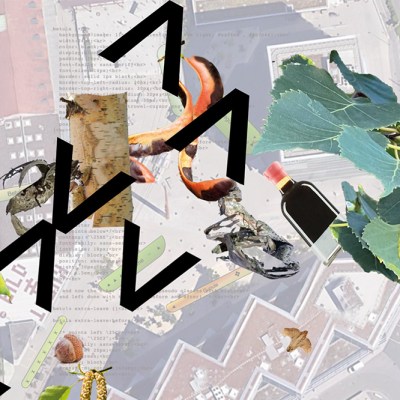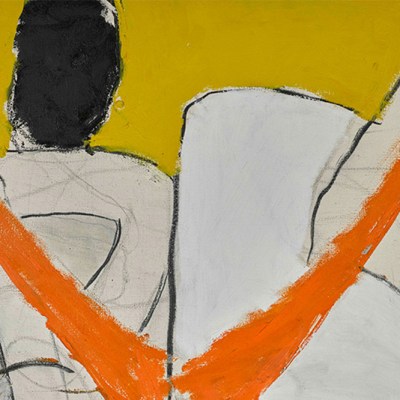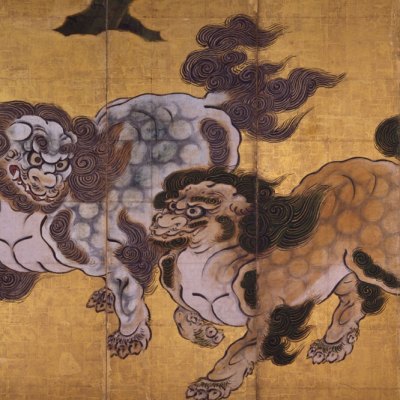‘The only function of economic forecasting is to make astrology look respectable,’ the economist John Kenneth Galbraith once said. With that caveat in mind, here are my predictions about the biggest issues for the art world in the year ahead.
The economy
The art market ended on a high in 2022 with record-breaking auctions in New York in November totalling $3.2bn and big sales at the last major art fair of the year, Art Basel Miami Beach. But many are bracing for a fall.
At the end of November, the Institute of International Finance (IIF), a global association of financial institutions and central banks, said 2023 will be as weak as 2009, as Ukraine becomes a ‘forever war’. It predicted recession in the United Kingdom and Eurozone, stagnation in the United States and said there was an optimistic outlook for China only if it manages to shake off persistent lockdowns.
Sales of art tend to fall during economic downturns. In the last global recessions of 1991 and 2009, volumes fell by 64 per cent and by 36 per cent respectively, according to Arts Economics. Much depends on the United States, which accounts for almost half of the art market.
It now looks likely that the art market will contract in 2023, though not by 1991 or even 2009 levels. Meanwhile the increasing number of ultra-wealthy people around the world, many of whom buy art, may protect the top end of the market.
The two Just Stop Oil supporters who glued themselves to the frame of J.M.W. Turner’s Thomson’s Aeolian Harp (1809) at Manchester Art Gallery in July 2022 Photo: David James/Alamy Stock Photo

The art
At times in 2022, the gulf between the art in museum exhibitions and biennials and the works selling in the market seemed huge. But that looks set to narrow in 2023.
Last summer, the main Venice Biennale exhibition was dominated by Surrealist, outsider and technology work by largely forgotten female artists. The best national pavilions showed video art, notably Adina Pintilie for Romania and Francis Alÿs for Belgium (many critics felt both should have been nominated for a Golden Lion). Documenta went further, presenting art and workshops by more than 50 mostly non-Western collectives curated by the Indonesian group ruangrupa. In June, the big story at auctions and art fairs was the rise and rise of a raft of ‘wet paint’ artists – flashy young painters with little museum track record but splashy prices.
That looks set to change. Museum curators will, of course, continue their social justice agenda: the commitment to women, non-white and LGBTQ+ artists that has burgeoned since the #MeToo and the Black Lives Matter movements. But the exhibition schedule for 2023 is dominated by blockbuster shows of the great artists of the 20th century: Twombly (Museum of Fine Arts Boston), O’Keeffe (Museum of Modern Art, New York), Klimt (Lower Belvedere, Vienna), Van Gogh (Art Institute of Chicago), Diego Rivera (Crystal Bridges), Matisse (Tokyo Metropolitan Museum) and Philip Guston (Tate Modern). Not to mention the 42-exhibitions-across-38-museums-fest devoted to Picasso to mark the 50th anniversary of his death.
Meanwhile, in the market, trendy areas such as NFTs have already all but crashed and emerging genres – such as modern and contemporary African art – appear to be cooling. The top 10 selling artists by market share in New York in November were all canonical dead white men. A new period of sobriety, some might say conservatism, is setting in.
The environment
The art world has largely been behind the curve when it comes to the environment, figuring, not unrealistically, that it is small fry compared with vast polluting industries such as oil, agriculture and even fashion. Attitudes have changed, but it is unclear if this will translate into action in 2023.
Museums have been in the firing line since climate activists realised that their unusual combination of public access, relatively low security and high media profile make them soft targets — unlike the headquarters of the likes of Exxon Mobil and Rio Tinto. Protests by artists and activists have ended sponsorship deals between museums and BP and Shell.
Around the time of COP26 in Glasgow, billed as the most important climate event since the Paris Agreement of 2015, galleries and arts businesses rushed to join the Gallery Climate Coalition (GCC), an initiative by a handful of London galleries. It now has more than 600 galleries, art fairs and auction houses as members, including leaders such as Christie’s, Sotheby’s, Art Basel and Gagosian. Members sign up to reduce their carbon emissions by at least 50 per cent by 2030.
The biggest environmental challenge for the art market is its dependence on business travel and the air-freighting of works to fairs, auctions, exhibitions, biennials and collectors around the world. These account for around 85 per cent of
galleries’ emissions, the GCC says, advising they cut back or switch to road or maritime transport. How practical this would be is unclear — most galleries depend on international fairs, which have unexpectedly bounced back since the pandemic to around 330.
Meanwhile, collectors say they are back to 2019 levels of art fair attendance (some in private jets), if the latest Art Basel and UBS collecting survey is accurate. All of this led Julie’s Bicycle, an agency hired by Arts Council England and the GCC to advise on environmental reductions, to say in its most recent cultural industries report that ‘the high-end art market presents particular sustainability challenges’.
The GCC has announced that in April this year it will introduce a new tier of ‘active membership’ to highlight those arts businesses making measurable change. That suggests some of its members are more show than go.
The politics
It is 50 years since Sotheby’s launched its first auctions in Hong Kong and, since then, it has grown to become one of the three main international art market hubs, with London and New York. But as Xi Jinping’s regime continues to tighten its grip on Hong Kong’s freedoms – including censoring artists and institutions – and provoke tensions with Taiwan and in the South China Sea, some are asking if this can continue.
Big business is certainly worried. Last autumn, the Global Financial Centres Index put Singapore as Asia’s top financial centre, third behind only New York and London. In November, the Hong Kong authorities hosted a summit for more than 100 international financial and business leaders to reassure them.
Nevertheless, Hong Kong’s latest modern and contemporary auctions were markedly down, according to analysts ArtPro and Artron. That was a result of the on-off lockdowns plaguing much of China, the auction houses say. The next edition of Art Basel Hong Kong in March will have 30 per cent fewer galleries than in 2019, possibly for the same reason.
What is clear is that the art trade is experimenting with other options. This month a new fair, ArtSG, opens in Singapore after several delays. Art Basel’s parent company has bought back a 15 per cent stake after divesting it in 2016, and maintains interests in the city-state’s S.E.A. Focus fair as well as in Art Week Tokyo in Japan. Meanwhile Magnus Renfrew, the first director of Art Basel Hong Kong and co-founder of ArtSG and the Taipei Dangdai art fair, heads new venture Tokyo Gendai, launching in Japan in July. Frieze Seoul is expected to take place for the second time this year where several major galleries have already expanded.
But for now, the big art market players are still betting on Hong Kong. Phillips is moving to a new building in West Kowloon near the M+ museum, and Christie’s will move to a larger headquarters in the Henderson building in 2024. Meanwhile, the territory still has the largest number of Western galleries of any Asian city. And while so far more than 200,000 Hong Kongers have left since 2020, no Western gallery has joined them.
A work from Marie Maillard’s NFT series ‘FLOW’, which can be viewed on the virtual gallery Minteed. Image: courtesy Minteed

The technology
Although cryptocurrencies crashed in 2022, interest in blockchain has not. A slew of art-and-tech projects have launched in the wake of the pandemic – expect more in 2023.
Most fall into one of two camps. Minteed, which had a soft launch at the end of 2022 with €3m in seed funding from French electrical retailer Fnac, helps artists ‘mint’ digital artworks and present them in virtual galleries to be viewed by collectors. It is one of several platforms and apps designed to connect artists directly to buyers. It imagines a mass market for art with much lower prices and, in most cases, the high-end ‘gatekeepers’ (for which, read auction houses and galleries) removed.
Arcual is in the other camp, seeing itself principally as a service provider to the existing market. Arcual launched in autumn with funding from Art Basel, its parent company MCH, Swiss collector Maja Hoffmann’s Luma Foundation and BGC Digital Ventures. Like some other companies, it uses blockchain to register, authenticate and track the provenance of works of art. Arcual says it also makes it easier to administer things such as the Artists’ Resale Right in the territories in which it applies.
These businesses have all spotted potential gaps in the market. There are thousands of artists leaving art schools each year who will never find a gallery. There is a potentially huge pool of buyers who would like an original work of art but can’t afford the current ‘starting price’ of around $10,000. But building retail brands that customers trust can take years and millions of dollars.
Artists, museums and galleries meanwhile attest to the administrative burden of registration, authenticity, provenance and condition reporting. The question is whether these new companies can deliver what the market wants more efficiently and cheaper than lower-tech alternatives. After all, the ownership history of every inch of land in the UK is known, in some cases back to the Middle Ages, not because of blockchain, but because of an extremely large book called the Land Registry.
Blockchain, like Bitcoin, is sometimes described as an answer in search of a question. In the art market there are undoubtedly problems with conducting business: expect more tyro startups in 2023 to try to persuade us that technology is the solution.



